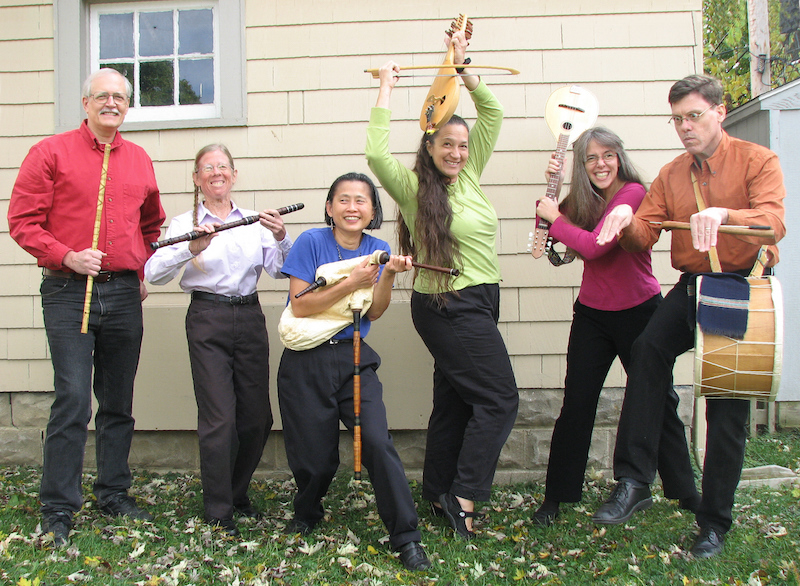
Hajde
Playing Bulgarian and Macedonian Folk Music on Traditional Instruments

Hajde (pronounced HIGH-deh) means "Let's go!"
The members of Hajde have come together
because of a common love for the Eastern European music they've been
studying and dancing to for many years, and have been playing
together since the early 1990s. Their music features the unusual rhythms and melodies of
the areas in and around Bulgaria and Macedonia. Dance
tunes and songs are played on traditional instruments and sung in the styles from these rich cultures. |
|
Balkan Dance
Party Saturday, October 12th, 2019 7:30 - 10:30 pm at Clinton Heights Lutheran Church 15 Clinton Heights Ave. Columbus OH 43202 |
| Live music by two bands! Click the link above for more details. |
| Band bios [as pictured above
from left to right] |
| Bob Snider - Plays Macedonian kaval and Bulgarian kaval. He has traveled to Bulgaria and studied with master kaval teachers Lyuben Dossev and Ljupčo Milenkovski. See his kaval page here. |
| Leslie Scott discovered international folk dancing thanks to a college physical education requirement, and has been hooked on it ever since. After being introduced to Balkan singing at folk dance workshops, she came to love singing while dancing. Playing music for dancers came later, after she decided she didn’t have to dance every single dance. She started learning to play Bulgarian kaval at her first EEFC Balkan Music and Dance Workshop in 1990, and was one of the founding members of Hajde a year or two later. Leslie has been to Bulgaria about 10 times, mostly on folk dance and music tours, and has taken kaval classes at Balkan Camp from expert Bulgarian players such as Lyuben Dossev and Valeri Georgiev. In Hajde she also plays Macedonian kaval and contributes some vocals. Outside of Hajde, she plays recorder and accordion with other bands - and, of course, keeps on dancing. |
| Loretta M. Yam (gajda (Thracian, Macedonian, Rhodope), Macedonian tambura, tapan, vocals). "Once upon a time, there was a folk dancer who came upon Gajda, Tapan, and Tambura. Tapan was energetic but a bit heavy. Tambura was nimble but rolled a bit. Gajda was just right. And they all lived happily ever after. The End." |
|
At
a young age, Ann Mosconi developed a love for
music while playing violin and flute in grade school, and guitar and piano
as a teenager. Her vocal experience includes
singing in choirs in middle and high school, one of which produced a
45rpm record in the 1960s. During
college, she sang and played guitar, charango, bandurria,
quena, and castanets with a group performing Hispanic music and dance,
eventually forming a singing trio that performed together for more than 25 years as Las Alegrías.
Ann also discovered international folk dancing while in college, and her particular interest in Balkan dances led her to
begin attending the EEFC east coast music and dance camps in 1988.
She has taken classes from such expert musicians
as Vassil Bebelekov, Nikolay Kolev, Georgi Petrov, Vlad Popovich,
and Kremena Stancheva. She
now focuses on gadulka, tambura, and vocals, with a smattering of gajda
and tapan on the side. |
|
Lea Anne Kangas (Bulgarian tambura, Macedonian tambura, vocals) was introduced to international folk dancing in junior high school. Continuing to dance through her teens, she grew more interested in Balkan dances and rhythms. Though possessing a degree in Music Theory and Composition, for reasons that completely elude her it didn't occur to her to seriously try playing an instrument until in her forties. Now she can't seem to stop. In addition to Bulgarian and Macedonian tambura, she is studying guitar, bugarija, and recorder along with renewed interests in piano and singing. In the Balkan vein, she has received tambura instruction from Stoyan Kostov and Adam Good, as well as attended workshop classes in Bulgarian singing with Elitsa Stoyneva, Donka Koleva, and Tzvety Dosseva-Weiner. |
|
As a child
of folk dancing parents, Tom Kangas fell asleep at many
dance events. Later he enjoyed learning and performing dances of
many countries and is currently studying the couple dance traditions of
Sweden and Norway as well as Spanish flamenco. For a college
project he built one of the drums that he plays today with Hajde.
He performed as a dancer and musician (principally on clarinet) with
Živili – Songs and Dances of Yugoslavia, and as a member of a prog-folk
band, Kaj Mi Nuka. Focusing on percussion with Hajde, Tom has
taken tupan and doumbek classes with Polly Tapia Ferber, Jerry
Kisslinger, and Matt Moran at EEFC Music & Dance Workshops. |
| See www.eefc.org for more information on East European Folklife Center and Balkan Camp. |
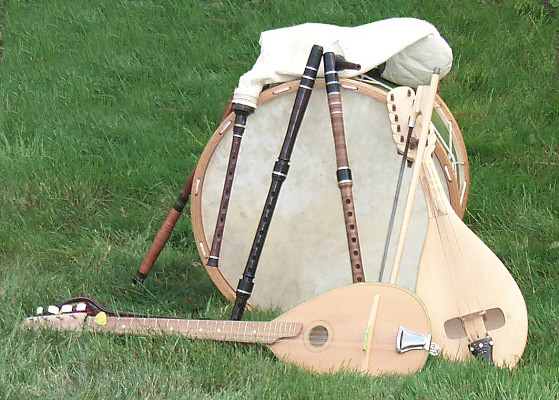
| About the Instruments | |||||
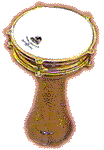 |
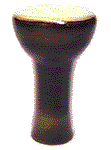 |
Dumbek [DOOM-bek] - An hourglass-shaped drum, frequently of metal [first photo] or ceramic [second photo], with a single skin head, played with the hands. | |||
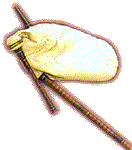 |
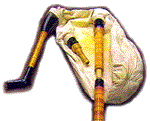 |
Gajda [GUY-duh] - A bagpipe with a single chanter having 8 finger holes, and one drone. [First photo - Bulgarian; second photo - Macedonian] Air pressure is sustained by periodically blowing through the blowpipe into the bag, then squeezing steadily with the left arm. | |||
 |
Gadulka [guh-DOOL-kuh]- A bowed instrument similar to a rebec with many sympathetic strings in addition to 3 melody strings. It is held upright with the lower end tucked into a shoulder strap, and bowed horizontally. | ||||
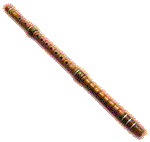 |
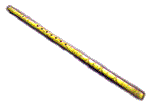 |
Kaval [kah-VAHL or KAH-vahl] - An end-blown flute with 8 finger holes and a 3-octave range. (See Bob's kaval page) [First photo - Bulgarian; second photo - Macedonian] | |||
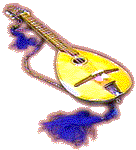 |
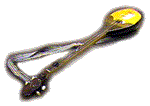 |
Tambura [tom-boo-RAH or TOM-boo-rah] - A mandolin with doubled strings in 4 courses (Bulgarian - first photo) or 2 courses (Macedonian - second photo), strummed to keep rhythm, or used as a melody instrument. | |||
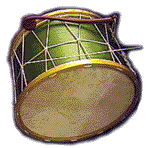 |
Tapan [TUH-pahn] - A large two-headed drum, played on one side with a heavy wooden stick, and on the other side with a thin switch. | ||||
For information on bookings, E-Mail Ann Mosconi.